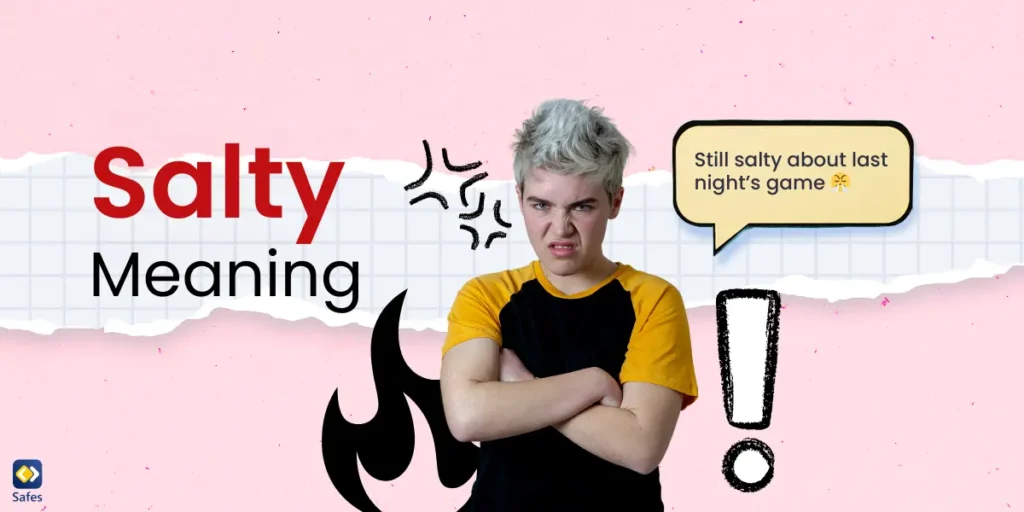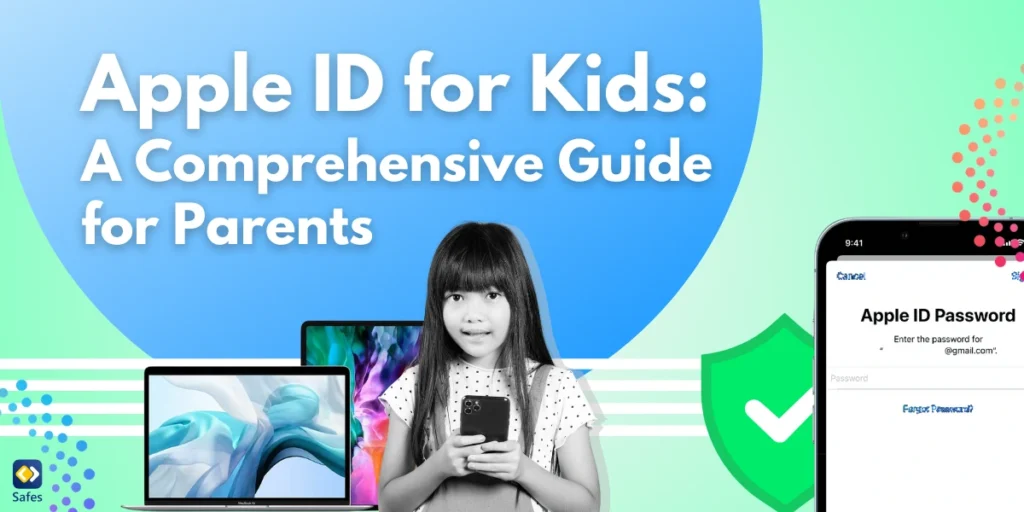Have you ever heard your child call someone salty and wondered what on earth they meant? You’re not alone. The slang world changes fast, and “salty” isn’t just about snacks anymore. These days, the salty meaning in slang has everything to do with attitude—usually the kind that comes with a bit of drama or a bruised ego.
Download and Start Your Free Trial of the Safes Parental Control App
In this blog, we’ll break down what salty really means, how kids and teens use it online, where it’s trending, and what it all means for digital safety. Whether your child is throwing the word around on TikTok, Snapchat, or during a heated game of Fortnite, this guide will help you stay informed and in tune—without needing to speak fluent teen.
What Does Being Salty Mean?
In slang, “salty” means someone is bitter, angry, or annoyed, often over something minor or petty. If a person is feeling salty, being salty, or acting salty, they’re probably upset because something didn’t go their way, and they might be showing it through sarcasm, passive-aggressive comments, or exaggerated frustration.
There aren’t many spelling variations, but the phrase “stay salty” is sometimes used jokingly or sarcastically to tell someone to keep their attitude or bitterness going.

How Is Salty Used in Real Digital Interactions?
Kids and teens commonly use salty in digital conversations to describe someone who’s overreacting, holding a grudge, or being overly dramatic after a loss or disagreement. The tone is usually playful or teasing, though it can sometimes be sarcastic or mocking, depending on the context.
Examples:
- Text message:
- “Ugh, she didn’t get picked for the team and now she’s so salty.”
- Instagram comment:
- “Why you so salty? 😂 It’s just a meme!”
- Snapchat story:
- “Still salty about last night’s game 😤”
- Gaming chat (e.g., Fortnite, Roblox):
- “Bro rage quit again. So salty lol”
Platform-Specific Usage
How “salty” is used can vary quite a bit from one platform to another.
TikTok
Salty is used in captions, hashtags (#salty), or comments, often to call out overreactions in a funny or dramatic video. Sometimes creators use it to describe themselves in a self-deprecating way after a failed attempt (e.g., cooking, dating, gaming).
Snapchat
On Snapchat, salty might be used in private stories or Bitmoji captions, especially when sharing a personal “fail” or venting in a silly way.
Salty in Video Game Chats (e.g. Discord)
This is where salty really shines. Gamers use it all the time to describe someone who lost a match and is complaining, being passive-aggressive, or rage quitting.
Used in comments or captions when someone’s showing attitude or reacting to criticism. The tone here is usually sarcastic or ironic.
Risk Level Indicator (Parent Alert System)
🟡 Yellow – Context matters; can be misused.
While salty is generally harmless and often used in a playful or teasing way, context matters. It can sometimes come off as mocking, passive-aggressive, or escalate arguments—especially in gaming chats or online comments. If a child uses it frequently in a negative tone, it might be a sign of frustration, conflict, or even online drama. Parents don’t need to worry if they see it used casually, but it’s worth keeping an eye on tone and context to make sure it’s not part of a pattern of mean-spirited behavior.
Trend Tracker: Is It Still Relevant?
🔥 Trending – widely used now
As of April 2025, salty is still very much in use and can be considered trending. While it’s not a brand-new piece of slang, the term remains prevalent across digital platforms like TikTok and social media group conversations. Teenagers and young adults continue to use it to call out overreactions or bitter attitudes in both playful and sarcastic contexts. Its staying power illustrates how well it has adapted to changing online vernacular, keeping it relevant and effective in modern digital interactions.
Online Safety Considerations
The term Salty itself is not linked to secret codes, cyberbullying, or grooming tactics, but it can sometimes be part of more negative exchanges if used in a derogatory or targeted manner. Here are a few pointers for parents:
- Monitor the Context:
- Keep an eye on how your child uses and responds to slang like salty. If it’s part of playful banter among friends, it’s generally harmless. However, if it becomes a persistent tool for belittling or exclusion, it might warrant further discussion.
- Discuss Digital Communication:
- Talk with your child about the impact of their words. Explain that even common slang can hurt others if used harshly, and encourage them to express their feelings directly instead of resorting to sarcasm or passive-aggressive remarks.
- Look for Patterns:
- Occasionally, recurring usage of such language in heated contexts could be a red flag for underlying issues like bullying or social exclusion. Monitoring behavioral trends can help you recognize if your child might be involved in, or a target of, negative interactions.
- Promote Open Dialogue:
- Encourage your child to communicate openly about their online experiences. Let them know that it’s okay to come to you if they feel uncomfortable or see their peers being targeted by language that feels hurtful.
By staying informed and embracing honest conversations about online interactions, parents can better support healthy digital behavior and help children navigate the complexities of social media communication.

How Can Parental Controls Help?
Parental controls are essential tools for ensuring that children navigate digital spaces safely. These tools help parents monitor and manage the online experiences of their kids, whether they’re using smartphones or laptops.
Safes Parental Control App
The Safes parental control app, available on Android and iOS devices, provides a user-friendly interface for parents to set limits on screen time, monitor social media use, and control the types of content their children can access. With features such as real-time alerts and detailed activity reports, this app empowers parents to understand their child’s online interactions and intervene when necessary.
Windows Parental Controls
For children using laptops, Windows offers built-in parental control features that allow parents to set up user accounts with restricted access. This includes setting time limits for computer use, blocking inappropriate websites, and monitoring online activities. These controls are especially useful in ensuring that a child’s digital behavior stays within safe and appropriate bounds when they’re using their laptops at home or in school environments.
Together, these parental control tools provide a comprehensive safety net, enabling parents to maintain oversight over their child’s digital interactions while promoting responsible and healthy online habits.
Conclusion
Understanding what salty means in today’s digital world can give parents a helpful window into how kids communicate online. While it’s mostly harmless and often just a funny way to call someone out for being upset, tone and context can shift its meaning. Knowing where and how it’s used—from TikTok to gaming chats—makes it easier to spot when it’s all in good fun and when it might hint at something more serious. With open conversations and the right tools like parental controls, you can stay in the loop without hovering. After all, staying connected to your child’s online world doesn’t mean knowing all the slang—it just means being willing to ask, listen, and guide when needed.
Your Child’s Online Safety Starts Here
Every parent today needs a solution to manage screen time and keep their child safe online.
Without the right tools, digital risks and excessive screen time can impact children's well-being. Safes helps parents set healthy boundaries, monitor activity, and protect kids from online dangers—all with an easy-to-use app.
Take control of your child’s digital world. Learn more about Safes or download the app to start your free trial today!




